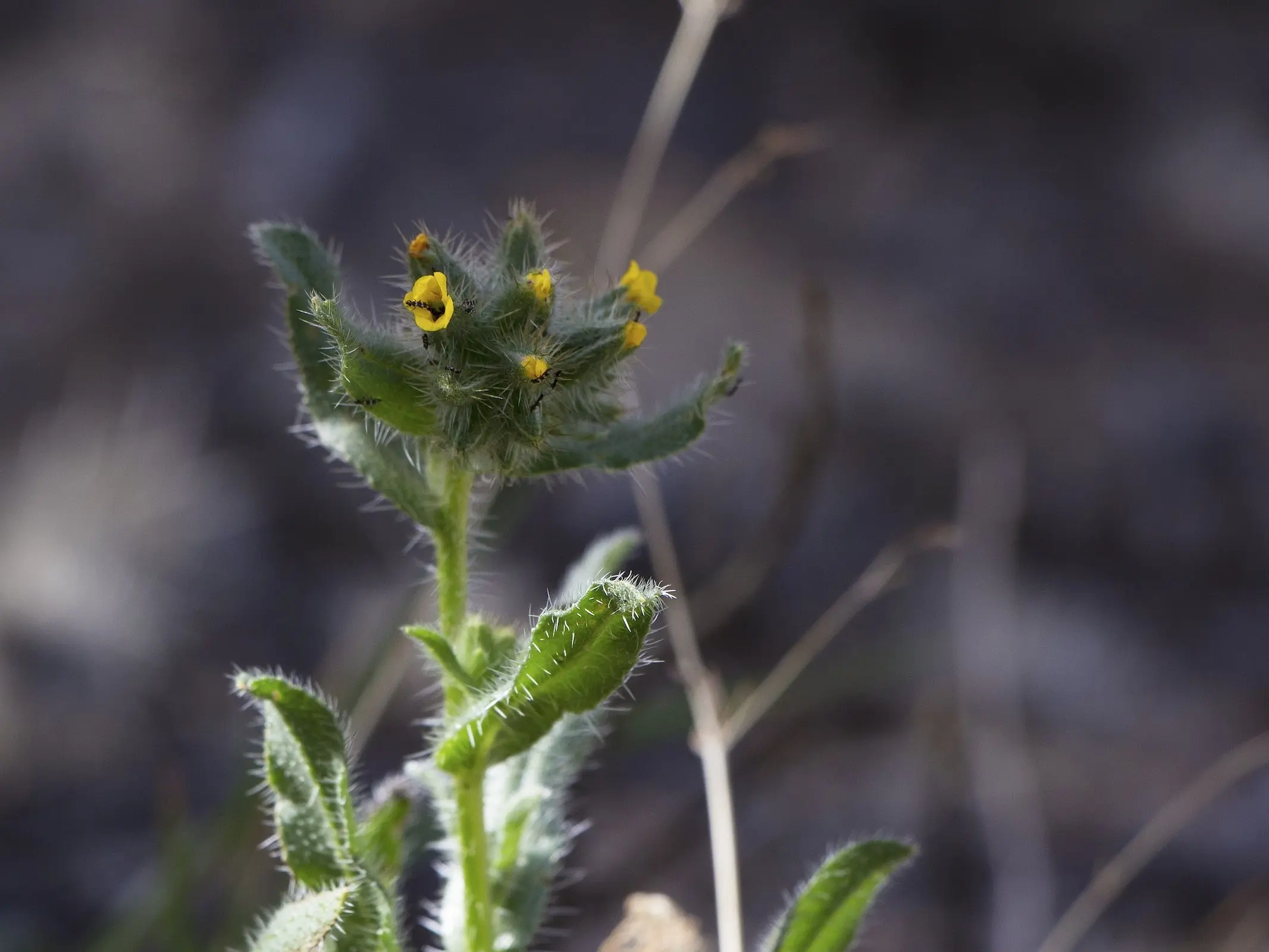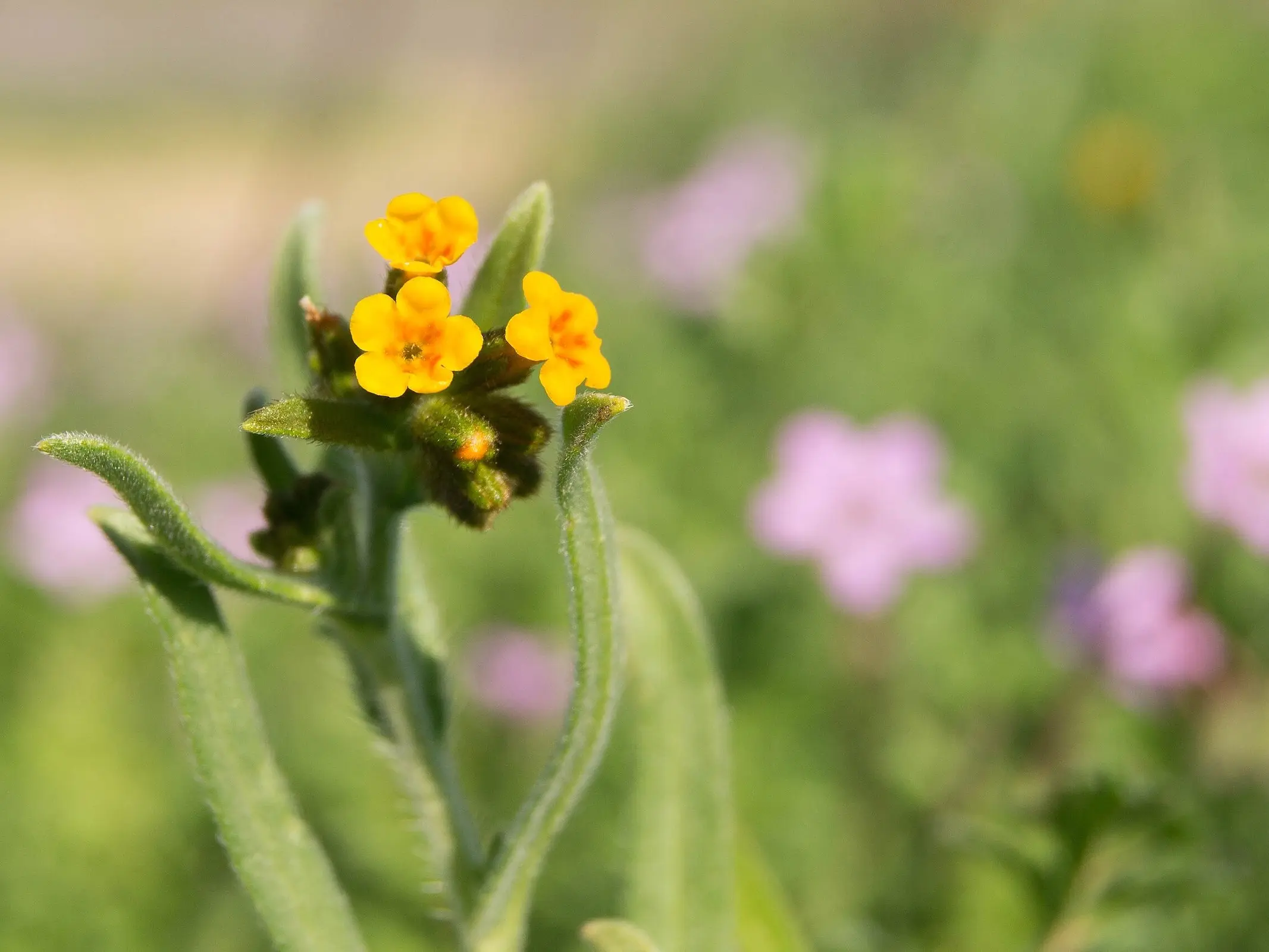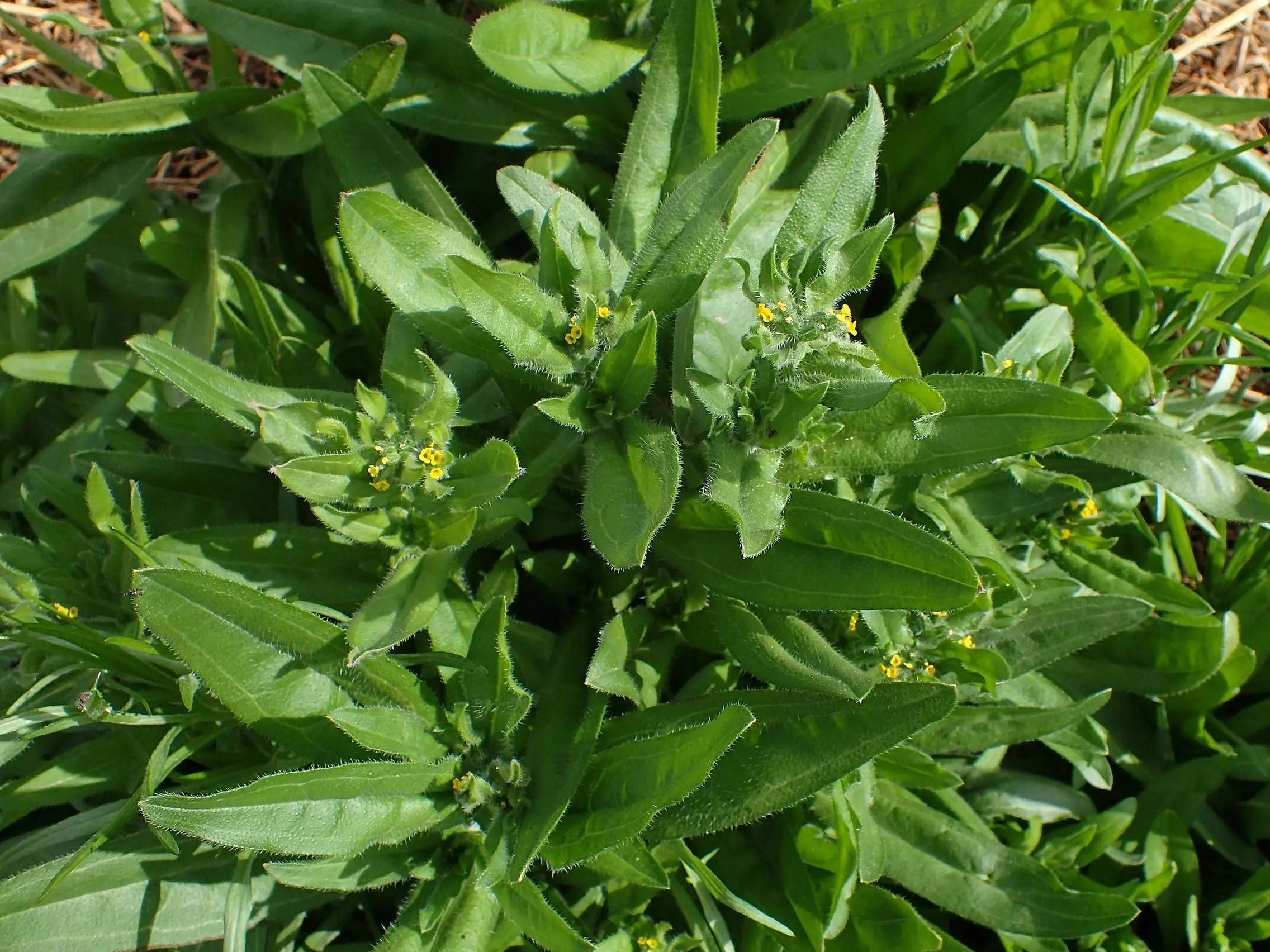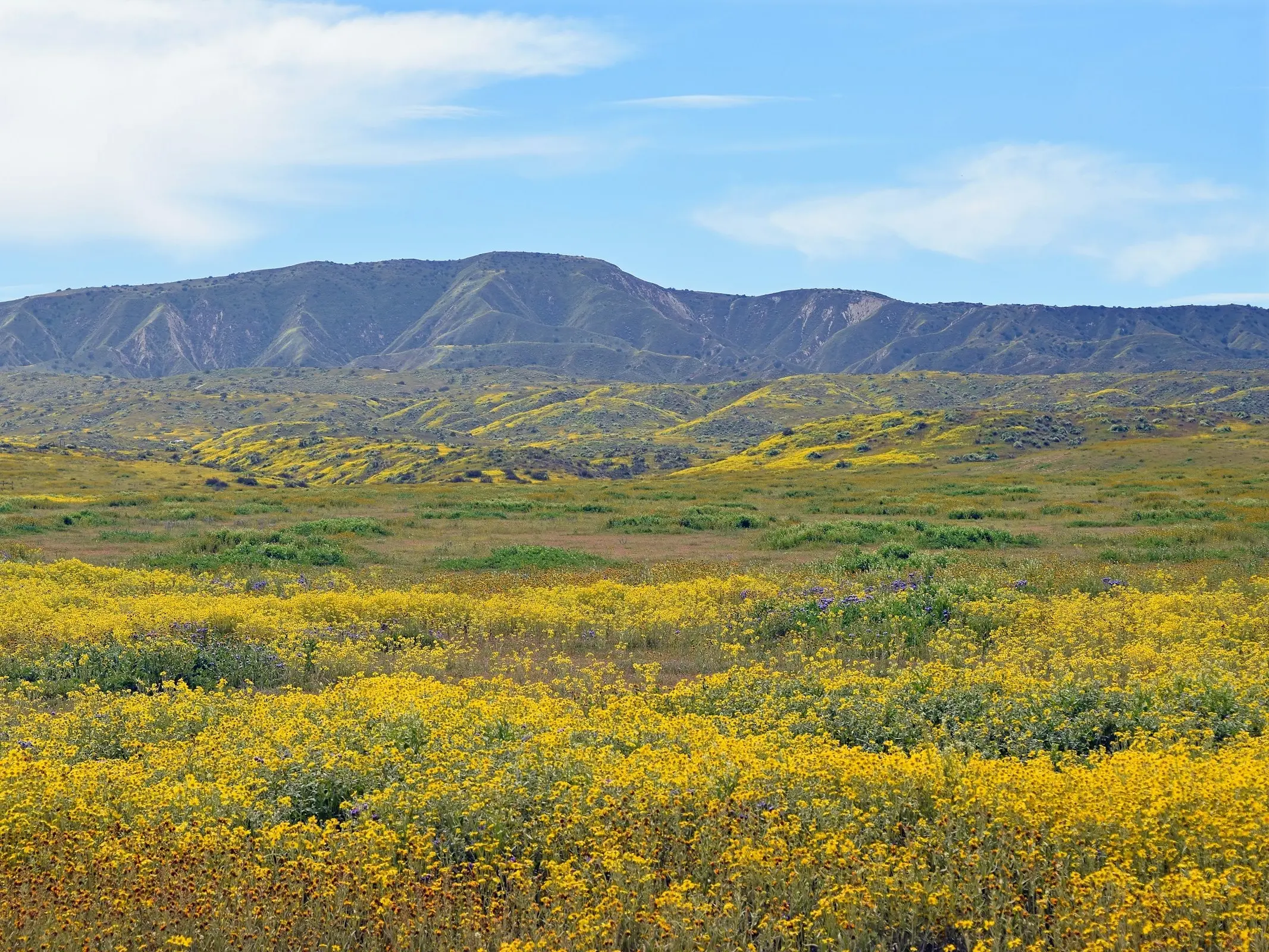
Names
Amsinckia species, Caterpillar Weed, Tarweed, Coast Fiddleneck
Description
Annual weed growing two to three feet. Whole plant is hairy, leaves alternate. Flowers are orange to yellow and grow only on outside of fiddleneck.

Concern Level
Only during drought conditions, unpalatable. Still high due to extreme toxicity.
Toxic Parts
All parts of the plant are toxic.

Symptoms
Weight loss, depression, aimless walking, constant licking, unusual behavior, photosensitization, jaundice of mucous membranes, red urine. Toxin can be passed through mares milk and can pass through the placenta to the foal.
Danger
Toxic pyrrolizidine alkaloids can cause liver failure, often called “walking disease” or “sleepy staggers”. Can be fatal.

More Information
Stevens County Noxious Weed Control Board
*It should be noted that we are not veterinarians. This information is written specifically for horses and should be used for reference purposes only. If you think your horse has eaten something toxic call your vet right away.